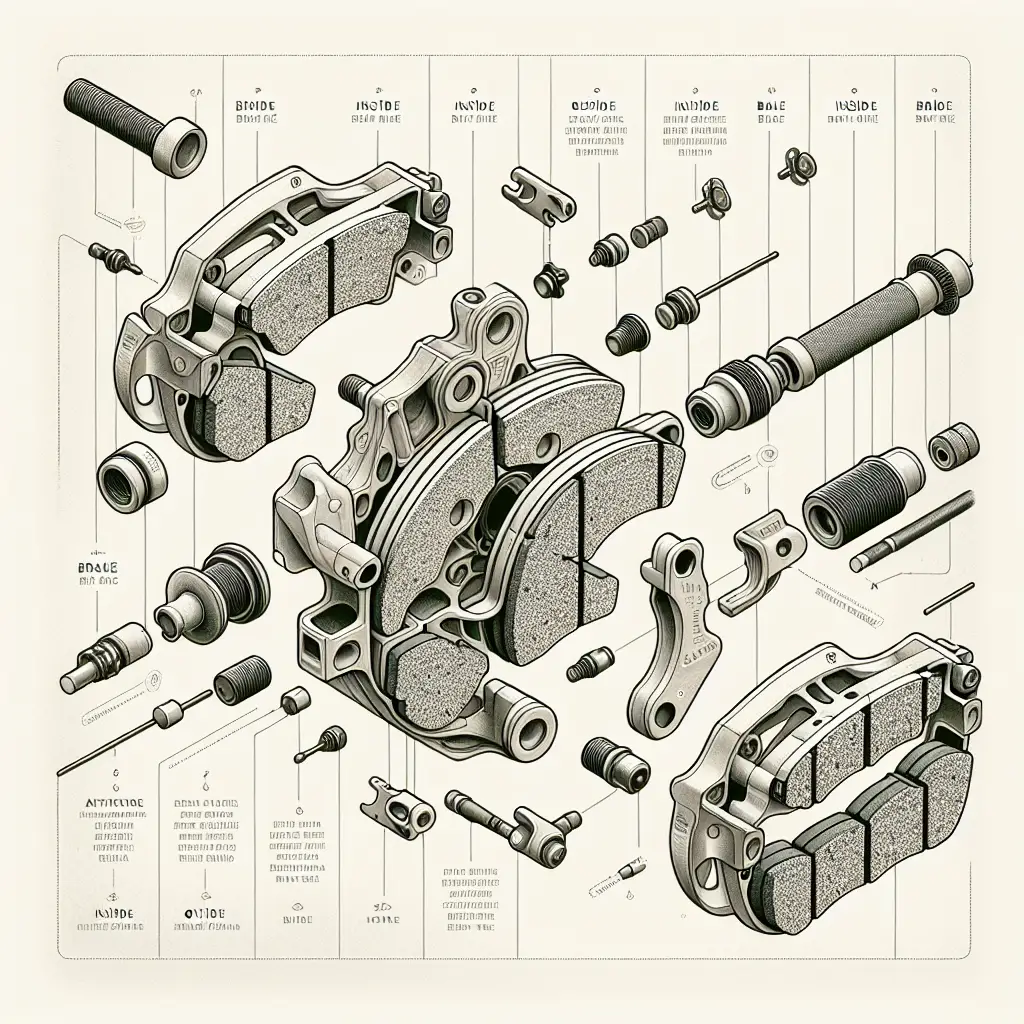Which Brake Pad Goes on the Inside?
When you’re at the wheel, you’re not only in command of a thrilling ride but also a weighty responsibility—ensuring you and others’ safety. A pivotal aspect of this is the brake system. Understanding the nuances of brake pads is critical for smooth, efficient stops. But when you peek into the world of brake maintenance, a common question crops you might ask is: which brake pad goes on the inside?
The Anatomy Of Braking: A Quick Overview
Before we dive into the intricacies of brake pad placement, it’s crucial to grasp how they function. Brake pads are a key component in the disc braking system of your vehicle, which also includes brake calipers and rotors. When you press the brake pedal, hydraulic fluid compresses the brake pads against the spinning rotors, bringing the vehicle to a stop. If you’re unfamiliar with this system, you can read a detailed explanation from Car and Driver.
Inner Vs. Outer Pads: Is There A Difference?
Yes, there can be a distinction. Brake pads may appear to be identical twins at first glance—but don’t let looks fool you. Often the inner and outer pads have different wear indicators or have been manufactured with a minor variance to serve their specific location best.
Identifying The Correct Pad
- Inner Brake Pads – These are positioned on the inside closest to the vehicle’s center. These pads usually have a wear indicator on them—a small piece of metal that creates a high-pitch squealing noise when the pad is worn down. This is your brakes telling you it’s time for a replacement. Experts from AutoZone advise paying attention to this as continuing to drive with worn brake pads can cause damage to the rotors.
-
Outer Brake Pads – On the flip side are the outer pads, positioned on the rotor’s external side. Sometimes, they don’t feature the wear indicator since they tend to wear out less rapidly than inner pads.
It is essential to consult your vehicle’s service manual or speak to a professional mechanic if you’re uncertain about the specifics for your car, as some models may have different requirements.
Why The Difference Matters
When brake pads are installed incorrectly—with the inner and outer pads swapped—troubles beckon. The incorrectly placed wear indicator won’t alert you when the pad is low, exposing you to the risk of metal-on-metal grinding that can hurt the rotors. Moreover, the distinctive wear patterns of inner and outer pads necessitate their correct positioning for optimal braking performance and safety.
Step-By-Step Guide To Brake Pad Installation
Here’s a concise guide to ensure you get those brake pads in the right place:
- Preparation – Before you get down to business, ensure you have the right tools and parts. Always purchase high-grade brake pads from reliable sources like NAPA Auto Parts for quality assurance.
-
Safety First – Secure your car with wheel chocks and make sure it’s on a level surface before lifting it with a jack.
-
Wheel Removal – Next, remove the wheels to gain access to the brakes.
-
Caliper Inspection – Carefully remove the brake caliper and examine whether it is the floating or fixed type. This is important for later steps.
-
Identify Pad Types – Compare the new brake pads to the old ones. Note the placement of wear indicators or any physical differences.
-
Install Pads – Place the inner pad with the wear indicator in the correct position inside the caliper and the outer pad on the outside.
-
Reassemble – Once the pads are in place, reassemble the caliper and the rest of the brake components in reverse order.
-
Final Checks – Before you lower the vehicle and hit the road, ensure all components are secure, and double-check your work.
Common Missteps To Avoid
It’s easy to make mistakes, especially if you’re a DIY novice. Common missteps include not lubing the slide pins enough (resulting in uneven wear,) and neglecting to replace the hardware, which can lead to rattle and poor performance. And don’t forget those wear indicators—if they’re not correctly installed, they won’t provide that crucial alert.
Closing The Loop
So, after our journey into the brake pad labyrinth, it’s clear – precision is key. Fit the inner brake pad with the wear indicator on the inside and the outer one on the rotor’s exterior. Get this right, and you’ll enjoy a smoother, safer drive.
If in doubt, seeking professional advice is always the prudent choice. After all, when it comes to brakes, there’s no room for guesswork. Investing in your car’s upkeep by ensuring the brakes are in top-notch condition is not just about maintenance—it’s about peace of mind.
Do you have any brake maintenance tips or stories? Share your experiences in the comments below—we’d love to hear from you!
Remember, keeping your car’s brake pads in check is not just a nod to vehicle longevity, but a non-negotiable for road safety. Safe driving starts with the right information and ends with the right practices, so let’s keep those wheels rolling and brakes in perfect working order.

